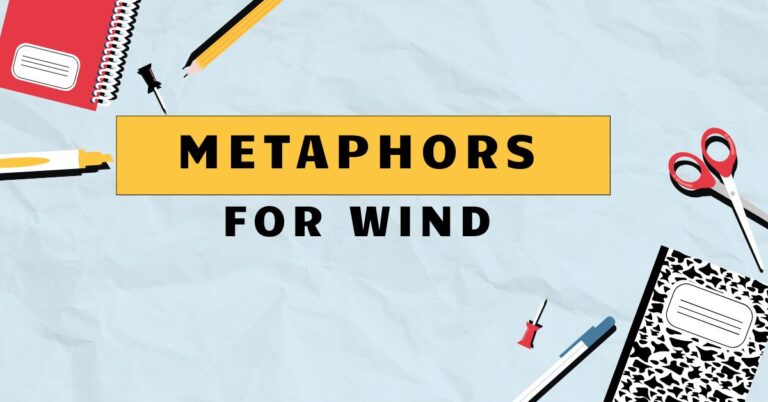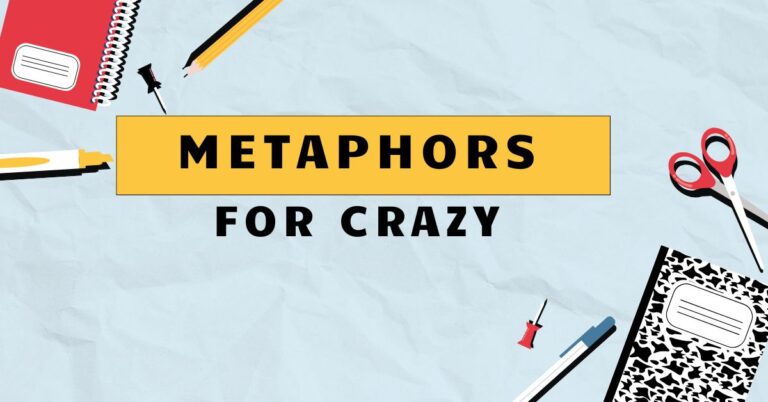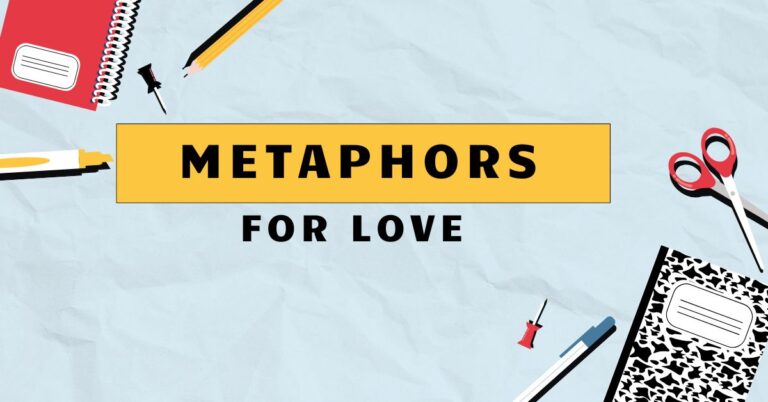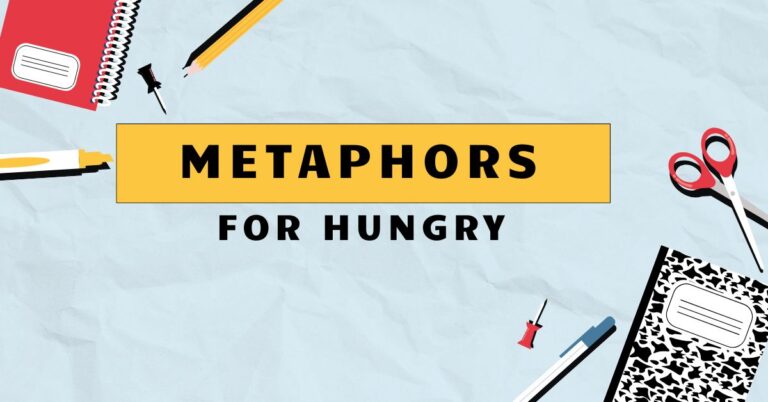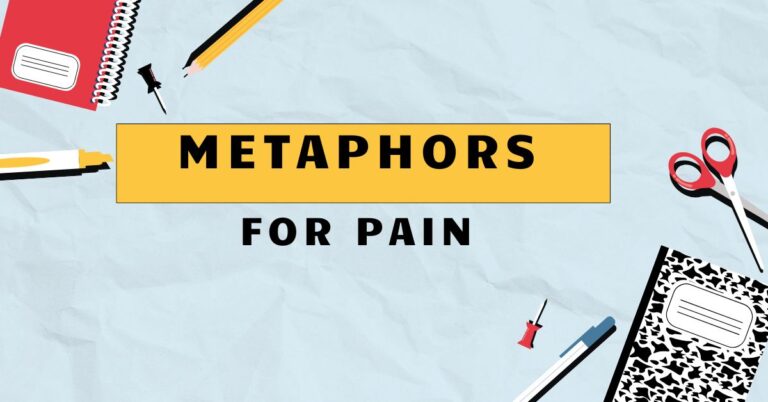49 Metaphors for Dogs: Understanding Figurative Language
Metaphors are powerful tools that enrich our language, allowing us to express complex ideas and emotions in vivid and relatable ways. Understanding how metaphors are applied, particularly in the context of describing something familiar like dogs, enhances our comprehension of both language and the subject matter.
This article delves into the world of metaphors for dogs, exploring their function, structure, and various types. Whether you’re an English language learner, a creative writer, or simply a dog enthusiast, this comprehensive guide will deepen your appreciation for the art of figurative language.
Table of Contents
- Introduction
- Definition of Metaphor
- Structural Breakdown of Metaphors
- Types of Metaphors
- Examples of Metaphors for Dogs
- Usage Rules for Metaphors
- Common Mistakes with Metaphors
- Practice Exercises
- Advanced Topics in Metaphorical Usage
- Frequently Asked Questions
- Conclusion
Definition of Metaphor
A metaphor is a figure of speech that directly compares two unlike things without using “like” or “as.” Its purpose is to suggest a resemblance and highlight a particular quality or characteristic shared by the two subjects. This comparison is not literal but imaginative, inviting the reader or listener to understand one thing in terms of another.
Metaphors serve several important functions in language. They can simplify complex concepts, evoke strong emotions, add color and vibrancy to writing, and provide new perspectives on familiar subjects.
By using metaphors, speakers and writers can create a deeper, more meaningful connection with their audience.
The context in which a metaphor is used plays a crucial role in its interpretation. The surrounding words, phrases, and overall tone of the passage influence how the metaphor is understood.
Furthermore, cultural background and personal experiences can shape an individual’s perception of a metaphor.
Structural Breakdown of Metaphors
Understanding the structural elements of a metaphor helps in both its creation and interpretation. A metaphor typically consists of two key components: thetenorand thevehicle.
The tenor is the subject being described, while the vehicle is the object or concept used to describe the tenor.
For example, in the metaphor “My dog is a furry alarm clock,” the tenor is “my dog,” and the vehicle is “a furry alarm clock.” The metaphor suggests that the dog, like an alarm clock, reliably signals the start of the day, likely through barking or other attention-seeking behaviors.
The ground of the metaphor refers to the shared characteristics or qualities between the tenor and the vehicle. In the example above, the ground is the quality of being a reliable signal or indicator of time.
The effectiveness of a metaphor depends on the clarity and relevance of the ground. A strong metaphor establishes a clear and meaningful connection between the tenor and the vehicle, making the comparison insightful and memorable.
Conversely, a weak metaphor may be confusing or irrelevant, failing to create a meaningful connection.
Types of Metaphors
Metaphors can be classified into several categories based on their structure and function. Understanding these different types can enhance your ability to identify and use metaphors effectively.
Explicit Metaphors
Explicit metaphors directly state the comparison between the tenor and the vehicle. These metaphors are often easy to identify because the connection is clearly articulated.
Implicit Metaphors
Implicit metaphors, on the other hand, imply the comparison without explicitly stating it. These metaphors require the reader or listener to infer the connection between the tenor and the vehicle.
Extended Metaphors
Extended metaphors are developed over several lines or even an entire piece of writing. They build upon the initial comparison, exploring different aspects of the relationship between the tenor and the vehicle.
Dead Metaphors
Dead metaphors are metaphors that have become so common that they are no longer recognized as figurative language. They are often used without conscious awareness of their metaphorical origin.
Examples of Metaphors for Dogs
The following examples illustrate how metaphors can be used to describe dogs, showcasing the variety of comparisons that can be made.
General Metaphors for Dogs
These metaphors capture the essence of dogs in a broad sense, highlighting their common traits and characteristics.
| Metaphor | Explanation |
|---|---|
| My dog is a furry shadow. | The dog constantly follows the owner, like a shadow. |
| He’s a four-legged vacuum cleaner. | The dog eats anything and everything it finds. |
| The dog is a love sponge. | The dog absorbs and returns affection readily. |
| Our golden retriever is sunshine on four legs. | The dog is cheerful and brings happiness. |
| That poodle is a cotton ball with eyes. | The poodle is fluffy and white, resembling a cotton ball. |
| The old dog is a wise sage. | The dog, due to its age, seems experienced and knowing. |
| My puppy is a bundle of energy. | The puppy has a lot of energy and enthusiasm. |
| The stray dog was a walking skeleton. | The dog was very thin and malnourished. |
| The dog’s bark is a thunderclap. | The dog has a loud and startling bark. |
| He is a canine comedian. | The dog’s antics are amusing and entertaining. |
| The dog is a furry therapist. | The dog provides comfort and emotional support. |
| My dog’s tail is a metronome. | The dog wags its tail rhythmically. |
| The dog is a loyal sentinel. | The dog stands guard faithfully. |
| Our dog is a furry bulldozer. | The dog pushes its way through things. |
| The dog’s nose is a radar. | The dog has a keen sense of smell. |
| That dog is a furry alarm clock. | The dog wakes everyone up early in the morning. |
| Our dog is a shadow of his former self. | The dog is not as energetic as he used to be. |
| The little dog is a pocket rocket. | The dog is small but very fast. |
| The terrier is a yapping machine. | The dog barks constantly. |
| My dog is a four-legged food disposal. | The dog eats all the leftovers. |
Metaphors Describing a Dog’s Personality
These metaphors focus on the dog’s temperament, behavior, and character.
| Metaphor | Explanation |
|---|---|
| My dog’s heart is a bottomless well of love. | The dog has an endless capacity for affection. |
| He’s a furry comedian, always performing for treats. | The dog is playful and entertaining. |
| Her loyalty is an unbreakable chain. | The dog is fiercely loyal. |
| The puppy is a mischievous imp. | The puppy is playful and naughty. |
| That dog is a furry diplomat, always making friends. | The dog is friendly and sociable. |
| His stubbornness is a brick wall. | The dog is very resistant to change or commands. |
| The rescue dog’s resilience is a phoenix rising from the ashes. | The dog has overcome hardship and is thriving. |
| The old dog’s wisdom is a library of untold stories. | The dog has a lot of experience and understanding. |
| My dog’s energy is a perpetual motion machine. | The dog has endless energy. |
| He is a canine Einstein. | The dog is very intelligent. |
| The dog’s patience is a virtue. | The dog is very patient. |
| My dog is a furry guardian angel. | The dog is protective and watchful. |
| The dog’s curiosity is a compass. | The dog is always exploring. |
| He is a canine Houdini. | The dog is good at escaping. |
| The puppy is a little devil. | The puppy is naughty and mischievous. |
| The dog is a love machine. | The dog is very affectionate. |
| My dog’s joy is a contagious virus. | The dog’s happiness is infectious. |
| The dog is a furry philosopher. | The dog seems to contemplate life. |
| He is a canine politician. | The dog is skilled at getting what it wants. |
| The dog’s fear is a dark cloud. | The dog is easily frightened. |
Metaphors Describing a Dog’s Appearance
These metaphors focus on the dog’s physical attributes, such as fur, eyes, and size.
| Metaphor | Explanation |
|---|---|
| His fur is a blanket of warmth. | The dog’s fur is thick and provides warmth. |
| Her eyes are pools of melted chocolate. | The dog has warm, brown eyes. |
| The Great Dane is a gentle giant. | The dog is large but has a kind temperament. |
| The dog’s coat is a river of gold. | The dog has a shiny, golden coat. |
| The bulldog is a wrinkled gargoyle. | The dog has a wrinkled face and a sturdy build. |
| His tail is a joyful whip. | The dog wags its tail enthusiastically. |
| The dog’s paws are velvet cushions. | The dog has soft, padded paws. |
| Her bark is a rusty hinge. | The dog has a scratchy, unpleasant bark. |
| The little dog is a furry bullet. | The dog is small and fast. |
| His ears are radar dishes. | The dog has large, sensitive ears. |
| The dog’s teeth are tiny daggers. | The dog has sharp teeth. |
| Her nose is a black button. | The dog has a small, black nose. |
| The dog’s legs are stilts. | The dog has long, thin legs. |
| His fur is a tangled mess of wool. | The dog has thick, unkempt fur. |
| The dog’s belly is a furry drum. | The dog has a round, full belly. |
| Her whiskers are delicate antennae. | The dog has long, sensitive whiskers. |
| The dog’s tongue is a pink ribbon. | The dog has a long, pink tongue. |
| My dog is a walking carpet. | The dog is covered in thick fur. |
| His paws are furry snowshoes. | The dog has large, furry paws. |
| The dog’s claws are tiny hooks. | The dog has sharp claws. |
Usage Rules for Metaphors
Using metaphors effectively requires adhering to certain guidelines. A poorly constructed metaphor can be confusing or detract from the overall message.
Here are some key rules to keep in mind:
- Clarity: The connection between the tenor and the vehicle should be clear and easily understood. Avoid using obscure or far-fetched comparisons.
- Relevance: The vehicle should be relevant to the tenor, highlighting a specific quality or characteristic that is meaningful in the context.
- Originality: While some metaphors have become commonplace, strive to create fresh and original comparisons that capture the reader’s attention.
- Consistency: Maintain consistency in the metaphor throughout the passage. Avoid mixing metaphors that create contradictory or confusing images.
- Appropriateness: Consider the audience and context when choosing a metaphor. A metaphor that is appropriate in one situation may be unsuitable in another.
Common Mistakes with Metaphors
Several common mistakes can undermine the effectiveness of metaphors. Being aware of these pitfalls can help you avoid them in your own writing.
| Mistake | Incorrect Example | Correct Example |
|---|---|---|
| Mixed Metaphor (combining incompatible images) | “We need to nip it in the bud and get the ball rolling.” | “We need to nip it in the bud.” or “We need to get the ball rolling.” |
| Cliché Metaphor (using overused and unoriginal comparisons) | “He was as brave as a lion.” | “His courage was an unyielding shield.” |
| Inappropriate Metaphor (using a metaphor that is unsuitable for the context) | “The dog’s death was a walk in the park.” | “The dog’s death was a heavy blow.” |
| Unclear Metaphor (using a metaphor that is difficult to understand) | “The dog’s loyalty was a purple elephant.” | “The dog’s loyalty was an unwavering beacon.” |
| Overextended Metaphor (carrying a metaphor too far, making it tedious) | “The dog was a ship sailing through life’s stormy seas, battling waves of adversity, navigating treacherous currents, and always keeping its compass pointed towards the shore of happiness, even when the anchors of despair threatened to drag it down into the abyss of sorrow.” | “The dog was a ship sailing through life’s stormy seas.” |
Practice Exercises
Test your understanding of metaphors with these practice exercises. Identify the metaphors in each sentence and explain their meaning.
Exercise 1: Identifying Metaphors
| Question | Answer |
|---|---|
| 1. The dog’s bark was a warning siren. | The metaphor is “warning siren.” It means the dog’s bark was loud and alarming. |
| 2. My dog’s love is a warm fire on a cold day. | The metaphor is “warm fire.” It means the dog’s love provides comfort and warmth. |
| 3. The puppy was a furry tornado, tearing through the house. | The metaphor is “furry tornado.” It means the puppy was destructive and energetic. |
| 4. His eyes were two shining diamonds. | The metaphor is “shining diamonds.” It means his eyes were bright and beautiful. |
| 5. The old dog’s memories were a faded photograph. | The metaphor is “faded photograph.” It means the dog’s memories were old and unclear. |
| 6. The dog’s tail was a happy pendulum. | The metaphor is “happy pendulum.” It means the dog’s tail wagged back and forth rhythmically and happily. |
| 7. My dog is a four-legged shadow, always by my side. | The metaphor is “four-legged shadow.” It means the dog always follows closely. |
| 8. The dog’s energy is a boundless ocean. | The metaphor is “boundless ocean.” It means the dog has a lot of energy. |
| 9. Her fur is a soft cloud. | The metaphor is “soft cloud.” It means her fur is soft and fluffy. |
| 10. The dog’s loyalty is an unbreakable vow. | The metaphor is “unbreakable vow.” It means the dog is extremely loyal. |
Exercise 2: Creating Metaphors
Create your own metaphors to describe the following aspects of a dog:
| Aspect | Your Metaphor |
|---|---|
| 1. A dog’s playful behavior | A playful dog is a bouncing rubber ball, full of unpredictable energy. |
| 2. A dog’s protective instinct | A protective dog is a vigilant fortress, guarding its loved ones fiercely. |
| 3. A dog’s sense of smell | A dog’s sense of smell is an intricate map, guiding them through a world of scents. |
| 4. A dog’s comfort | A dog’s comfort is a warm blanket on a winter night, soothing and secure. |
| 5. A dog’s happiness | A dog’s happiness is a burst of sunshine, radiating joy and positivity. |
| 6. A dog’s bark | A dog’s bark is a loud announcement, declaring its presence to the world. |
| 7. A dog’s sleep | A dog’s sleep is a peaceful retreat, where worries fade and dreams take over. |
| 8. A dog’s loyalty | A dog’s loyalty is an unwavering anchor, keeping them steadfast by your side. |
| 9. A dog’s appetite | A dog’s appetite is a bottomless pit, always ready for a delicious treat. |
| 10. A dog’s aging process | A dog’s aging process is a slow sunset, painting the sky with wisdom and grace. |
Advanced Topics in Metaphorical Usage
For advanced learners, exploring more complex aspects of metaphorical usage can further refine their understanding and skill.
Conceptual Metaphors
Conceptual metaphors are underlying cognitive structures that shape our understanding of abstract concepts. For example, the conceptual metaphor “ARGUMENT IS WAR” influences how we talk about arguments, using terms like “attack,” “defend,” and “win.”
Catachresis
Catachresis is the deliberate misuse of a word or metaphor, often to create a striking or humorous effect. It involves using a word in a way that is technically incorrect but conveys a specific meaning or feeling.
Mixed Metaphors and Cognitive Dissonance
While mixed metaphors are generally considered a mistake, they can sometimes be used intentionally to create a sense of confusion or cognitive dissonance, reflecting a character’s state of mind or the absurdity of a situation.
Frequently Asked Questions
- What is the difference between a metaphor and a simile?
A metaphor directly compares two unlike things without using “like” or “as,” while a simile uses “like” or “as” to make the comparison. For example, “He is a lion” is a metaphor, while “He is as brave as a lion” is a simile.
- Can a metaphor be a cliché?
Yes, a metaphor can become a cliché if it is overused and loses its originality. Cliché metaphors are often predictable and lack impact.
- How do I create effective metaphors?
To create effective metaphors, focus on finding relevant and meaningful connections between the tenor and the vehicle. Consider the specific qualities you want to highlight and choose a vehicle that effectively conveys those qualities.
- What is the role of context in interpreting metaphors?
Context plays a crucial role in interpreting metaphors. The surrounding words, phrases, and overall tone of the passage influence how the metaphor is understood. Additionally, cultural background and personal experiences can shape an individual’s perception of a metaphor.
- How can I avoid using mixed metaphors?
To avoid using mixed metaphors, carefully consider the images and concepts you are combining. Ensure that the different parts of the metaphor are consistent and create a coherent picture.
- Are metaphors only used in literature?
No, metaphors are used in various forms of communication, including everyday conversation, advertising, and political discourse. They are a versatile tool for expressing ideas and emotions in a vivid and engaging way.
- What is an extended metaphor?
An extended metaphor is a metaphor that is developed over several lines or even an entire piece of writing. It builds upon the initial comparison, exploring different aspects of the relationship between the tenor and the vehicle.
- How do metaphors enhance communication?
Metaphors enhance communication by simplifying complex concepts, evoking strong emotions, adding color and vibrancy to writing, and providing new perspectives on familiar subjects. They create a deeper, more meaningful connection with the audience.
- What is the difference between a dead metaphor and a fresh metaphor?
A dead metaphor is one that has become so common it’s no longer recognized as figurative, like “leg of a table.” A fresh metaphor is newly created and striking, offering a novel comparison that grabs the reader’s attention.
- How can understanding metaphors improve my English language skills?
Understanding metaphors enhances your comprehension of nuanced language, improves your vocabulary, and allows you to appreciate the creative and expressive potential of English. It also helps you grasp cultural references and idiomatic expressions.
Conclusion
Metaphors are essential linguistic tools that add depth, color, and meaning to our language. Understanding how to identify, interpret, and create metaphors, especially when describing familiar subjects like dogs, enhances our overall communication skills and appreciation for figurative language.
By mastering the structural components, types, and usage rules of metaphors, learners can express themselves more vividly and connect with their audience on a deeper level.
The key takeaways from this article include recognizing the tenor and vehicle in a metaphor, avoiding common mistakes like mixed metaphors, and practicing the creation of original and impactful comparisons. Continue to explore and experiment with metaphors to unlock their full potential and enrich your writing and speaking.


